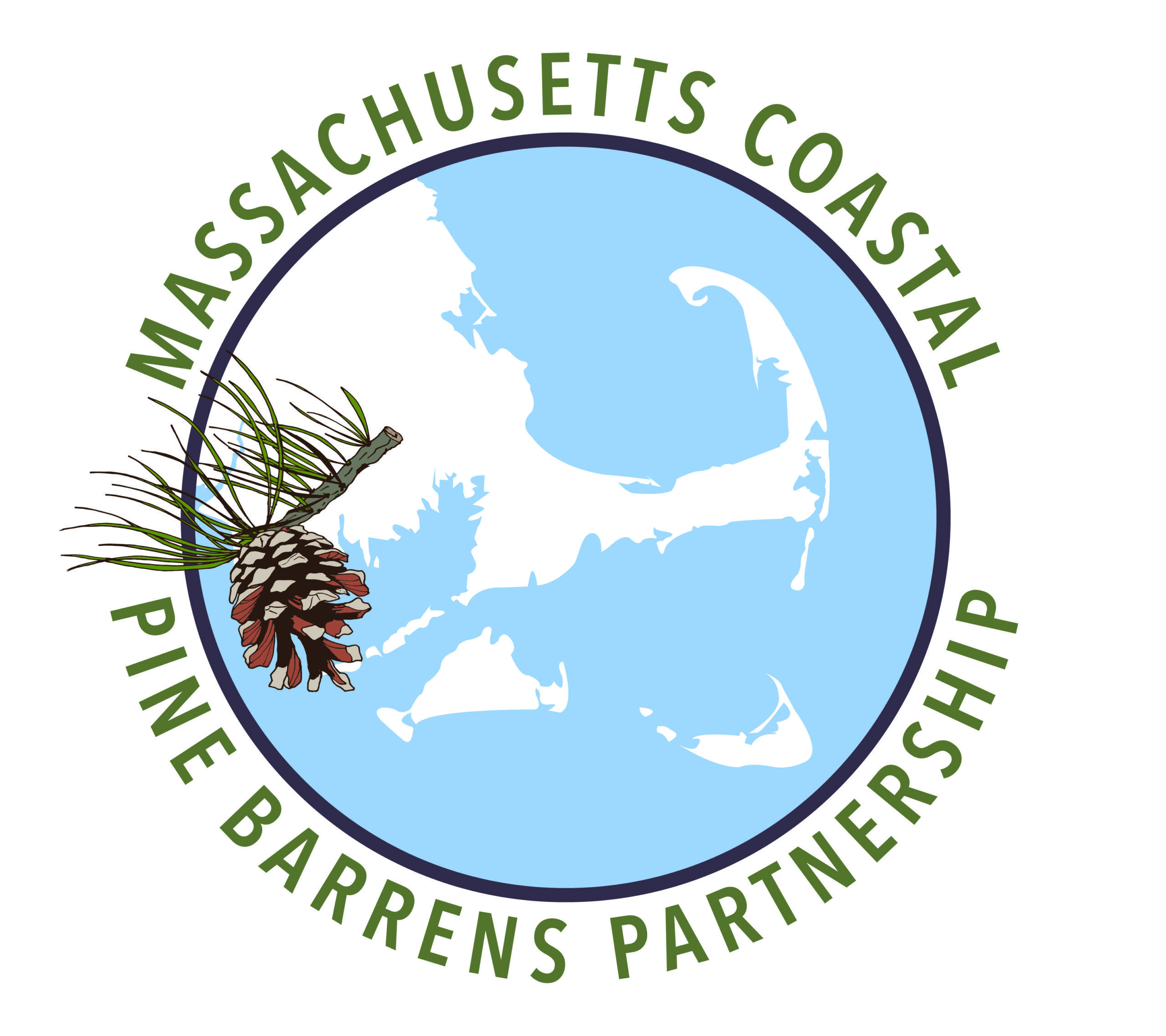Massachusetts Coastal Pine Barrens Partnership
Building Partnerships
Our Massachusetts Coastal Pine Barrens, the second largest Atlantic Coastal Pine Barrens in the world, begins in Kingston, stretches south, then west along Buzzard’s Bay to Marion, leaps over the artificial dividing line of the Cape Cod Canal, extends the length of Cape Cod and reaches the islands of Martha’s Vineyard and Nantucket.
Over 750,000 people reside within the ecosystem, numbers that swell when tourists—who intensively utilize our natural resources—take up residence during an ever-lengthening season. The millions of people who reside within or visit this area are largely drawn here by its natural beauty underneath which a suite of elements—fresh-water ponds, spring-fed streams and wide expanses of pitch pine-scrub oak forests—imbue the air with that indescribable “Cape Cod” feel. Specifically, our ecoregion encompasses just under 525,000 acres, with only 28 percent or approximately 145,000 of those acres protected.
Unique among regional conservation partnerships, the geographic scope of the Massachusetts Coastal Pine Barrens Partnership (PBP) is delineated by the boundary of a globally rare ecosystem which today encompasses 31 municipalities and four counties and is owned and/or managed by individuals, federal, state and municipal entities, land banks, trusts and others. A region-wide, cross-jurisdictional effort is needed to protect sustainable representations of the 40 natural communities in this region as identified by the Massachusetts Department of Fish and Wildlife Natural Heritage and Endangered Species Program.
Driven by a sense of urgency, we have charged ourselves with uniting the community to save Massachusetts’ Coastal Pine Barrens. If we are successful the ecological significance will be beyond measure.
Governance
The PBP is under the direction of a Steering Committee consisting of nine respected leaders in the community who have expertise in forestry, ecology, planning, communication, environmental education and community organizing. The SC meets quarterly to provide guidance to the Coordinators from the host organization, SEMPBA. Decisions are made by consensus.
Partners
Ideally, the attributes of a ‘partner’ organization will include a broad suite of skills, resources and expertise that will help move the mission of the Partnership forward.
While partners are free to choose when, where and how they are involved, they should have the expectation that they will be regularly asked to participate in collaborative initiatives, grant applications, public outreach efforts and other activities. The ultimate goal of the Partnership is to achieve the overall enhancement of the ecosystem, but in doing so, they support the work of all of the partners.
Partners bring obvious benefits to the Partnership, and we hope they will also receive practical benefits from their association, including links on the Partnership website, social media postings when appropriate, listing in the Regional Conservation Directory, and general promotion of their individual organizational missions, events and programming. Partners will form temporary alliances when applying for grants with other partners and working on cooperative projects.
Call to Action
This is an invitation to come together to create unity and connectivity across towns, government agencies, and non-profit organizations. We want to enhance public awareness, education, appreciation, stewardship, management, and ultimately protection and preservation of the locally special and biologically significant Atlantic Coastal Pine Barrens eco-region.
Pine barrens are not barren. They are a globally rare concurrence of bio-geo-chemical conditions that have led to the development of coastal plain and kettle hole ponds, frost bottoms, vernal pools, acidic soils, fire-dependent mixed scrub oak–pitch pine forest, grasslands, and other unique habitats that support over 180 state-listed species of rare plants and animals. This region of fast-draining glacial outwash soils links all of Cape Cod and the Islands, plus the upper Cape towns of Bourne, Wareham, Marion, Plymouth, Carver, and Kingston. The pine barrens encompass numerous watersheds that overlie Cape Cod, Martha’s Vineyard, Nantucket and Plymouth-Carver sole-source aquifers.
Regional Conservation Partnerships
Many municipal and non-governmental entities share visions, concerns, and stewardship responsibilities for these rich natural resources that we in southeastern Massachusetts are fortunate to enjoy. But multiple urgent threats within the ecoregion are combining and thus require greater cooperative planning amongst these stakeholders.
The best way to facilitate this cooperation is through a regional conservation partnership (RCP). An RCP is a loose network of participating organizations and agencies that provide the synergy and supporting structure to foster collaborations for enhanced accomplishment of diverse yet mutually compatible missions.
RCPs from five states are banding together in the Regional Conservation Partnership Network to increase the pace and scale of land protection. This is the exciting new face of conservation in New England, and beyond. Find out more about the RCP Network here.
Representatives of groups that choose to participate in the Pine Barrens Partnership will coordinate efforts, enhance information exchange, and ensure better planning, oversight and management of the public’s shared resources. We invite you to join.
To find out more about how you can become involved, contact the Pine Barrens Partnership coordinators by email at [email protected].
Or call (773) 772–9982, to express your group’s interest and discuss special or additional issues, concerns and ways to get involved and/or help in the RCP formation.
